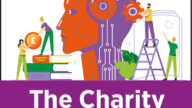AI (Artificial Intelligence) Hub
How charities are using AI in service delivery in 2025
In this article, Charity Digital explore how the sector is using artificial intelligence in services in 2025, including developing chatbots, making predictions, and becoming more agile.
Despite the hype, charities have been slow to adopt artificial intelligence (AI) within their services. In 2024, only 15% of charities used AI tools in their service delivery, according to the Charity Digital Skills Report, with the majority (12%) doing so behind the scenes. The top barriers to adopting AI tools, the report found, were a lack of skills and training , concerns around the quality and ethics of AI tools, and the financial cost of adopting them.
Charities are right to question the quality and ethics of emerging technologies. Using AI in services can involve unique risks, such as spreading misinformation, perpetuating bias and inequality, and compromising the personal data of service users. That’s why having a strategy and developing AI skills are so vital.
Approached in a well-informed and considered way, AI can offer unique opportunities. Here, we explore three of the ways that charities are using AI in their services, to consider how it might be able to help your charity.
Improving access with AI
A chatbot is any software simulating human conversation. First invented in 1966, traditional forms of chatbot use rigid decision tree-style menu navigation. But today, AI chatbots can use a variety of AI technologies: natural language processing to accurately interpret user questions, deep learning to become more accurate over time, and machine learning to optimise responses over time.
Interestingly, an early look at our Reimagining Services Survey indicates that AI chatbots are one of the most popular ways for charities to use AI in their services. One charity taking part in the trend is the West of England Centre for Inclusive Living (WECIL), based in Bristol. An award winning, user-led organisation, WECIL supports Disabled people to live the life they choose by challenging the barriers to independent living.
WECIL has used AI to create a chatbot called “Cecil from WECIL”, that functions like an Easy Read document. Easy Read documents are a format that makes written information easier to understand, usually combining short, jargon-free sentences with simple, clear images to help explain the content.
Dominic Ellison, CEO of WECIL, describes the chatbot: “When you open it, you’re presented with options including visual options, to help find the right information. This in turn makes our website more navigable for people who are learning disabled or who are neurodivergent.”
Making predictions with AI
For some charities, developments in the predictive capabilities of AI have improved their ability to tackle the problems their service users face. Housing Association charities can predict damp and mould risks by analysing repair data and other property information, enabling them to take preventative measures. Charities have used AI to predict homelessness, enabling them to put preventative measures in place before an individual or family become unhoused. Predictive AI can also help charities prepare for demand and improve outcomes. Another example is in medical treatment.
Prostate Cancer UK is striving for a world where no man dies from prostate cancer, and Movember is a charity changing the face of men’s health, including mental health, suicide prevention, prostate cancer, and testicular cancer.
In 2017, the two charities partnered up to tackle a gap in funding for prostate cancer medicine. Though one in eight men will get prostate cancer, the disease was seriously lagging behind other cancers in terms of precision medicine, a situation which was causing avoidable death and harm.
Prostate Cancer UK and Movember funded £1.2 million towards groundbreaking research led by University College London, which found that AI could be used to precisely and routinely predict the best treatment combinations for specific patients.
The researchers used a new multimodal AI tool from US company ArteraAI. Multimodal AI is a type of machine learning that can combine and analyse multiple different forms of data, which, in the case of ArteraAI, is multiple images of the patient’s biopsy. Using multiple forms of data helps achieve a more comprehensive understanding and make more robust predictions than working with just one form of data.
In 2025, being able to predict which type of treatment is best for each patient using AI could enable the NHS to move away from a “one size fits all” approach, improving access to the right treatment through greater precision.
Becoming agile with AI
Speed is a much-touted benefit of AI. Whether summarising dense regulatory guidance or gleaning insights from vast bodies of data, AI can give you swift answers using deep learning. When balancing speed with quality and ethics, AI can help charities respond quickly to the urgent crises of our time, like climate change and conservation.
WWF is the world’s leading conservation organisation, collaborating with people in nearly 100 countries to protect communities, wildlife, and the places in which they live.
The charity used AI when responding to the 2020 bushfires in Australia. An estimated three billion animals were affected by the bushfires, and the charity wanted to know how.
AI helped with the use of camera traps. Camera traps are digital cameras that take a picture when they sense movement, providing data on species location, population sizes, and how species are interacting. But in many projects, up to 90% of the images captured are “false triggers” – images of with no animals in the frame. For one person to go through these two seconds at a time, it would take around four years to complete.
“We don’t have that kind of time in conservation”, says Abby Hehmeyer, Senior Programme Officer for Wildlife Conservation at WWF.
So the charity worked with other conservation organisations and Google to develop a better way to manage camera trap data. Wildlife Insights was the result: an online platform that uses AI to filter out the blank images, find the ones that contain wildlife, identify the species in the photo, and share the photo with the conservation community. In addition, anyone who uses camera traps can use the platform.
This helped a team of ten scientists study more than 28 million acres, identifying more than 150 species among the seven million images collected. The findings demonstrated how drastically fires can shrink biodiversity.
“Other nations can build upon this research to improve understanding of fire impacts everywhere,” said Dr. Lily Van Eeden of the University of Sydney, who led the study.
Other ways charities are using AI in services
Charities are all at different stages of reckoning with AI: reacting to it in a measured way naturally happens at a different speed for charities of different types and sizes.
For some charities, AI automation can help streamline the flow of data. For example, Great Ormond Street Hospital (GOSH) is using AI to make better use of routinely collected data, enabling new treatments for rare and complex diseases to be implemented more quickly for patients.
AI is also being used by a number of charities for transcribing meetings and taking notes. GOSH is testing this functionality in its services, with the AI tool TORTUS listening to outpatient consultations to draft clinic notes and letters to increase the amount of time clinicians can spend face-to-face with patients.
The charity Full Fact use AI software to check and challenge false claims, collecting data from online news sites, speech on live TV, podcasts, and social media pages. The software uses a large language model to identify claims and see if they match with those that have been previously fact checked. Then Full Fact’s team of journalists take the claim offline to check it thoroughly.
Use of AI in areas like fundraising, finance, and governance can also can indirectly help charity services. For example, where it effectively frees up time in manual and administrative processes, it may be able to make more time available for more work directly with service users. Equally, as research by Joseph Rowntree Foundation and We and AI found, short-term efficiency gains are not always sustainable for charities when time is still needed to monitor outputs, manage compliance, quality, and trust issues, and adapt new tools.
Find out more
If you’d like to learn more about AI in charity service delivery, join us at the DSC AI Conference, where Laura Stanley, Senior Content Writer at Charity Digital, will break down how to use AI to enhance and improve services, exploring a variety of case studies and ethical considerations.


